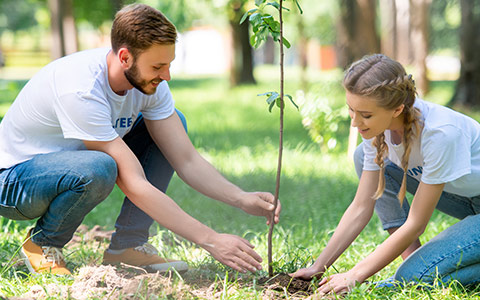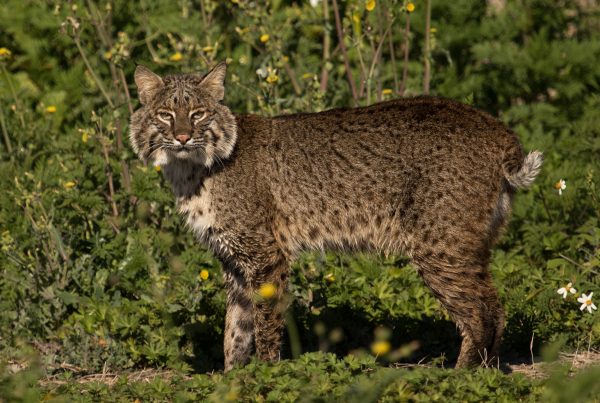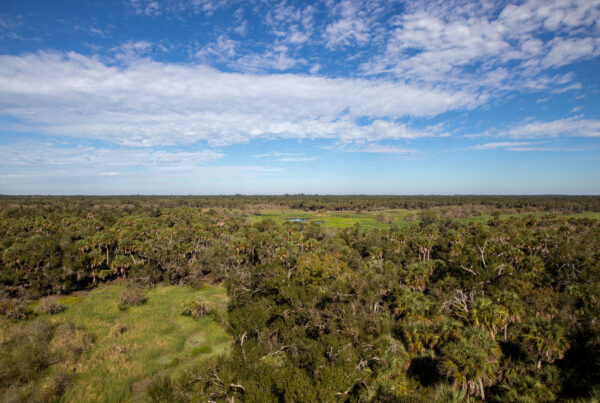Various shades of wildflowers along roadsides, on trails, and in native plant gardens will be soon be blooming and teeming with insect pollinators this fall.
Goldenrod, blazing star, and asters bloom through the fall and are essential to bees, butterflies, and other pollinators as blooms of summer wildflowers fade.
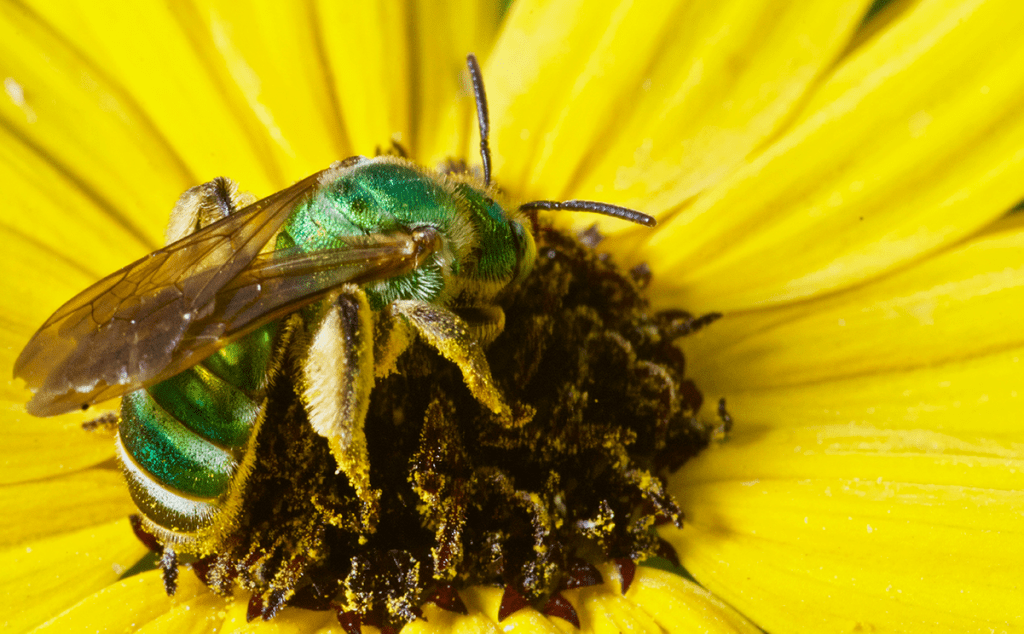
While fall wildflowers support many different pollinators and other small wildlife, bees are especially adapted to be attracted to the hues of many of these flowers. Though bees can’t see red, they do see colors from yellow to the ultraviolet spectrum—even beyond what our own eyes can see! Bees also easily distinguish between dark and light, making them adept at seeing edges and identifying different shapes.
Thanks to their incredible vision, bees can find flowers from a distance. Many flowers have ultraviolet patterns, sometimes called landing zones, to direct bees to the parts of the plant with nectar and pollen.
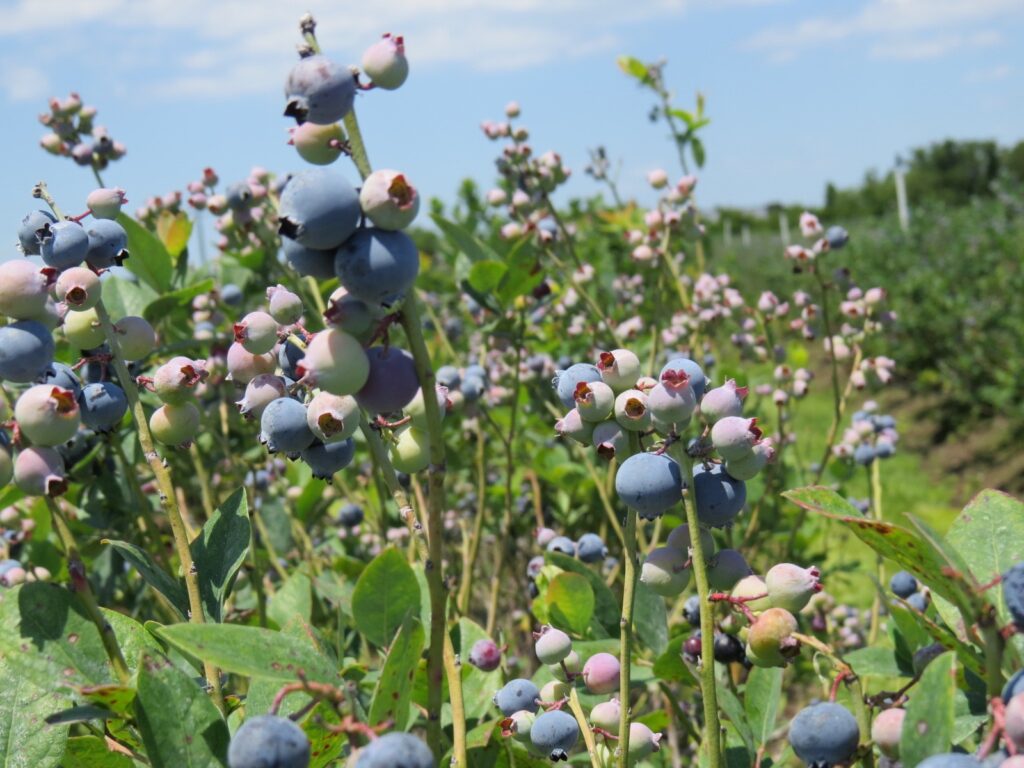
Blueberry field. Photo by Gerald Moyles
Crops like blueberries, cherries, cranberries, pumpkins, and squash, as well as most flowering plants in the wild and in gardens, need pollen carried by native bees.
We depend on native bees for healthy ecosystems—and native bees need our help to provide the diverse habitat they need to survive.
Watch for these fall bloomers in their natural habitat and add consider adding a favorite or two to your garden. Local native plant nurseries usually carry some of these plants or their seeds. Check with the professionals about which plants are best for your outdoor space. If a plant isn’t available, ask the nursery if they can stock the plant you are looking for.
Goldenrod (Solidago)
Several native species are found throughout the state in habitats from sandhills and coastal marshes, to pine flatwoods and more. Blooming in fall, most grow 3-5 feet tall with bright yellow flowers, providing nectar and pollen for bees, butterflies, and other insects.
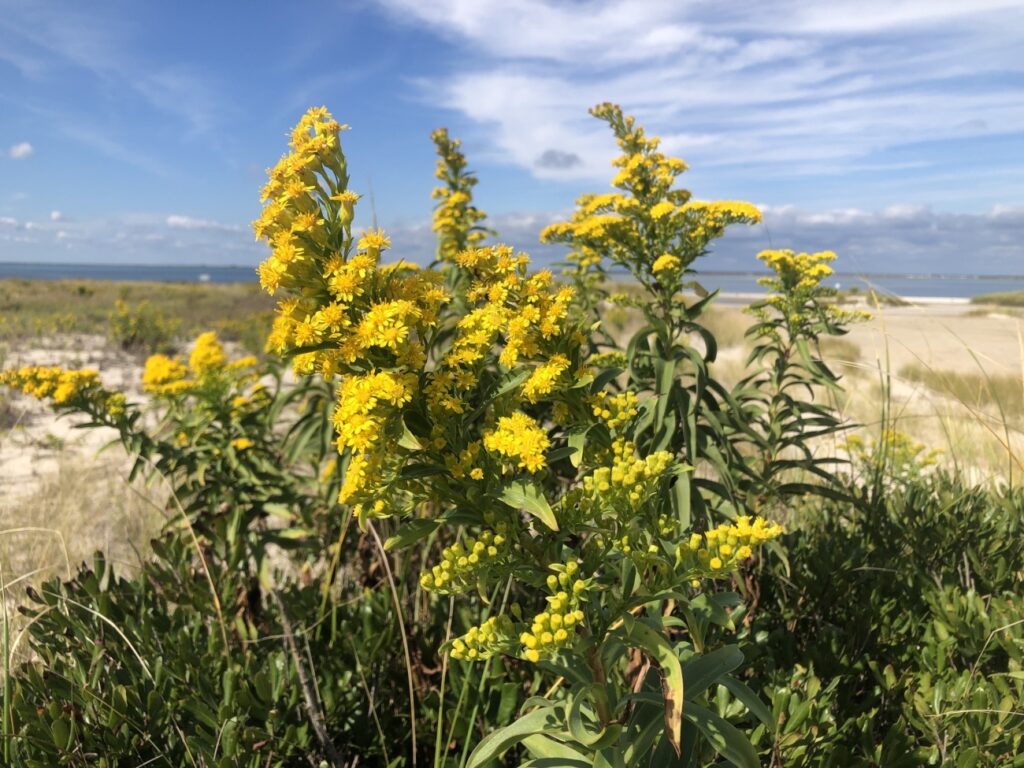
Seaside goldenrod. Photo by Y. Laskaris | USFWS
Wand goldenrod (Solidago stricta), found throughout the state, supports insects like monarchs, which use the nectar, and its namesake that pollinates the plant: the goldenrod soldier beetle.
Seaside goldenrod (Solidago sempervirens), found in coastal counties across the state to inland counties in the south, grows to 6 feet or more with full clusters of flowers. It’s another nectar plant for monarchs, along with other butterflies, and is pollinated by the goldenrod soldier beetle.
Blazing-star (Liatris)
In widely varied natural habits, certain native blazing-star species can occupy a very small range or grow throughout the state. They are tall, slender plants with blooms ranging in shade from purple to rose. Many are pyrophytic, meaning they are adapted to fire, and some will thrive after wildfires.
Chapman’s blazing star (Liatris chapmanii) grows in habitats including flatwoods, scrub, dunes, beach strands, sand ridges, fields and roadsides, in parts of the Panhandle and Peninsula. It’s adapted to fire and can reach 2-4 feet tall, showcasing purple spikes.
Slender blazing star (Liatris gracilis) occurs in habitats from bogs to savannahs throughout the state. Growing 2-4 feet in full sun, its narrow spikes of purple to rose shades attract a variety of insects.

Chapman’s Blazing Star. Photo by Mary Derrick | UF/IFAS.
Asters (Symphyotrichum)
Diverse native species grow in varied habitats throughout Florida with blooming times ranging from late summer to early winter, providing nectar and pollen to butterflies, bees and other pollinators. Asters have ray-like petals with different colored center discs, grow 2-5 feet tall, and many are fragrant.
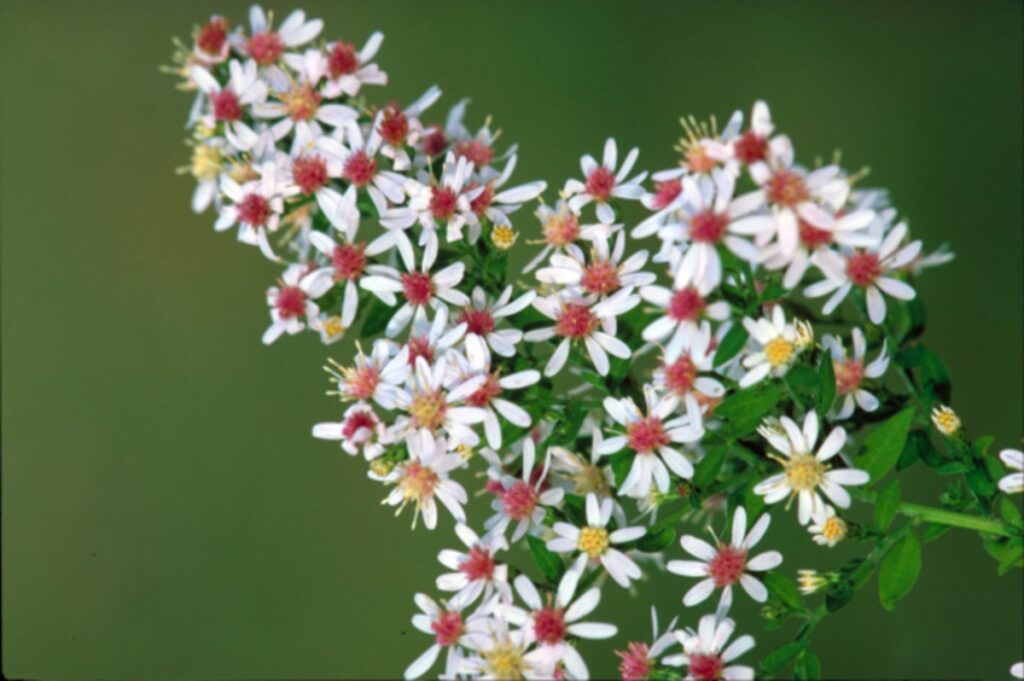
Calico aster. Photo by Dr. Thomas G. Barnes | USFWS
Calico aster (Symphyotrichum lateriflorum) occurs in diverse habitats in North and Central Florida. It can grow up to 5 feet tall, with abundant purple blooms. It supports a variety of native bees and is also a larval host for both butterfly and moth species.
Fall is a wonderful time to find wildflowers in their habitats, and to plant them in your garden or yard. Depending on your region, you can plant wildflower seeds and plants sometime between mid-September to early January. Both will need moisture in hot, dry periods which can occur in Florida’s fall season.



